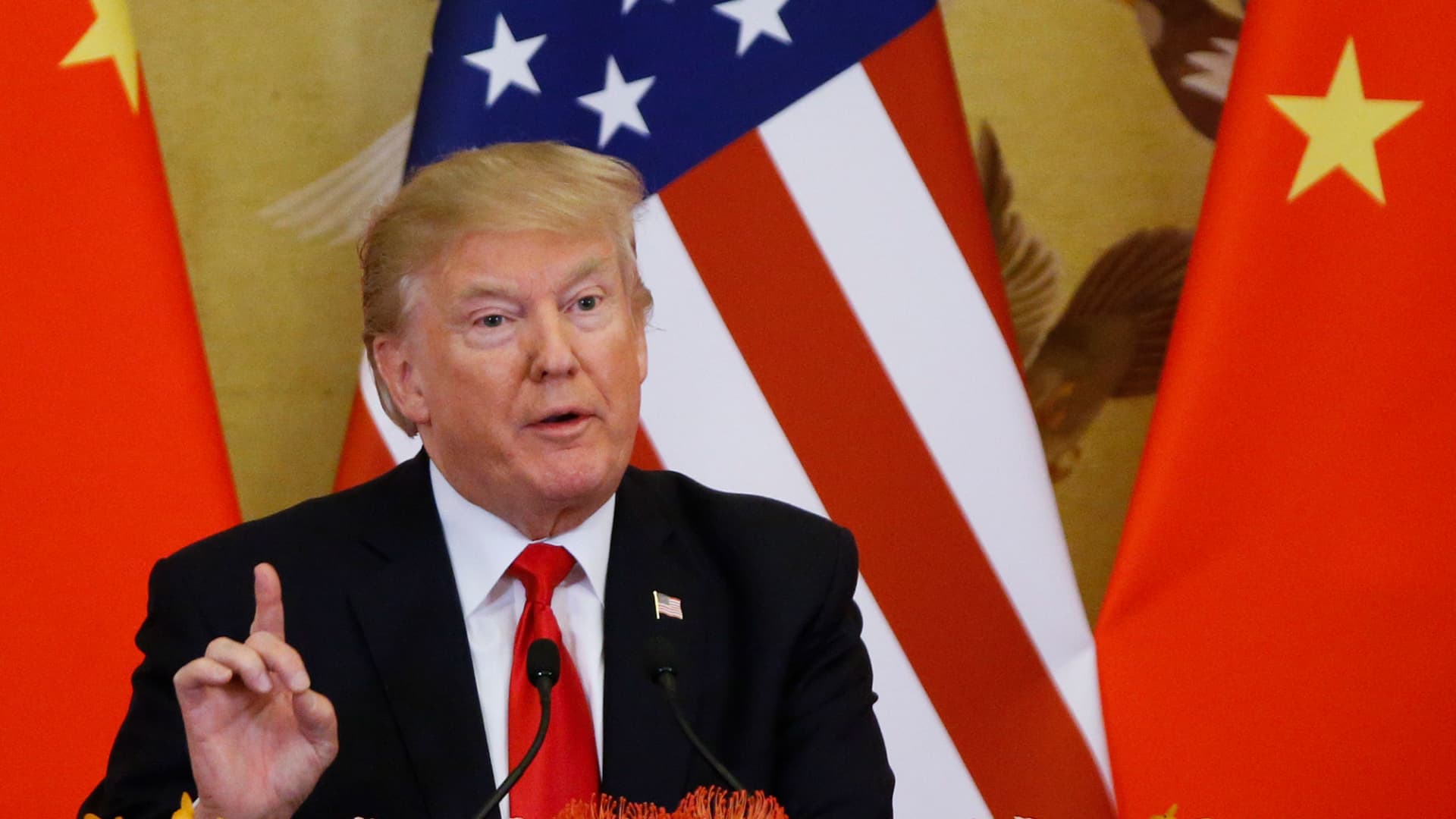
 press-releases
press-releases 
President Donald Trump and China’s President Xi Jinping (not shown) make a joint statement at the Great Hall of the People on November 9, 2017 in Beijing, China.
Getty Images
President Donald Trump’s plan to impose tariffs on up to $60 billion worth of goods imported from China, and Beijing’s response to earlier steel and aluminum tariffs, smashed the Shanghai Stock Exchange index. In the current environment it is difficult to apply technical and chart analysis because the emotion in the market is so strong and volatile.
However, past price activity can provide some guide to how the market may react in the future.
A shock reaction to the trade spat is a clear change in what had been a developing upside breakaway. The pattern of the Guppy Multiple Moving Average trend test and retest has ended.
The potential for a return to new uptrend behavior has also ended. This is confirmed with the gap-down behavior and the clear close below the potential uptrend line A (see chart below).
The fall below the trading band between 3,260 and 3,290 confirms that’s no longer acting as a stable support level. However, it will act as a strong resistance level for any future index rally.
Those observations may seem obvious, but they are important because they show that the index collapse is not temporary. This is not a repeat of the situation seen when the market fell in February and then rapidly recovered.
The market retreat on March 23 is a continuation of an established downtrend and a failure of breakout activity. That makes the environment much more bearish.
The trading band between 3,260 and 3,290 will now become a major obstacle for any index rebound or new uptrend development.
The potential support targets are best seen on the weekly chart.
The next support level is near 3,000. That is a long-term and reliable support level starting from around July 2016.
The market may move quickly toward that level and then find some stability. Investors will watch for the index to consolidate near that level and move sideways. Days of extreme volatility may temporarily push the index below 3,000.
There is a low probability of a rapid rebound from near the 3,000 level.
However, any rebound is initially treated as a rally rather than a trend change because the downside resistance features are very strong. In this environment the long-term GMMA will remain well separated and that is a major resistance feature that limits any rally and makes it more difficult to establish a new long-term uptrend.
In the short term, traders watch for fast rally-and-retreat behavior between 3,000 and 3,260. That is a good trading environment, but a dangerous one for investors.
A fall below 3,000 has long-term support near 2,650. Such a drop is very bearish.
Daryl Guppy is a trader and author of Trend Trading, The 36 Strategies of the Chinese for Financial Traders, which can be found at www.guppytraders.com. He is a regular guest on CNBC Asia Squawk Box. He is a speaker at trading conferences in China, Asia, Australia and Europe. He is a special consultant to AxiCorp.
For more insight from CNBC contributors, follow @CNBCopinion on Twitter.
24World Media does not take any responsibility of the information you see on this page. The content this page contains is from independent third-party content provider. If you have any concerns regarding the content, please free to write us here: contact@24worldmedia.com